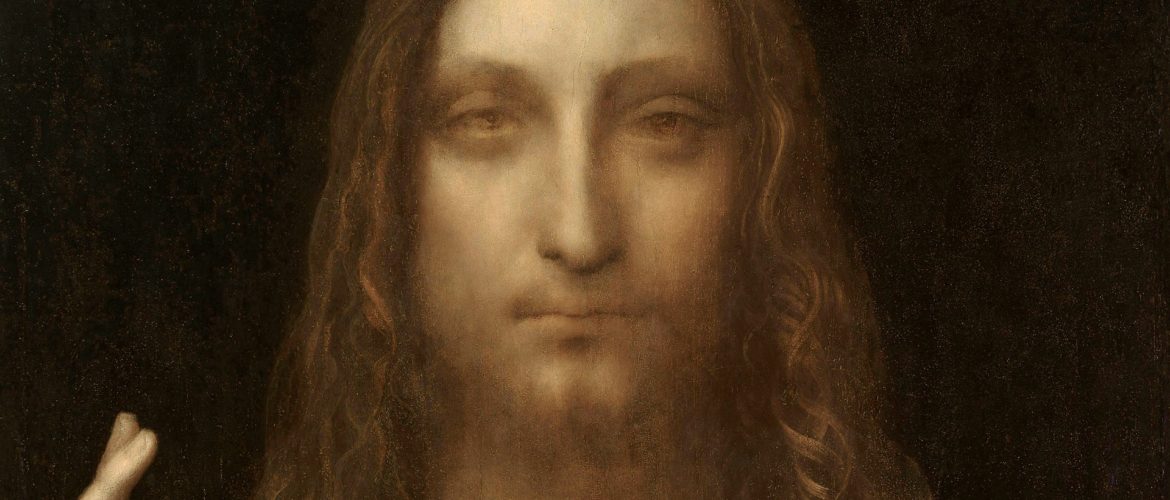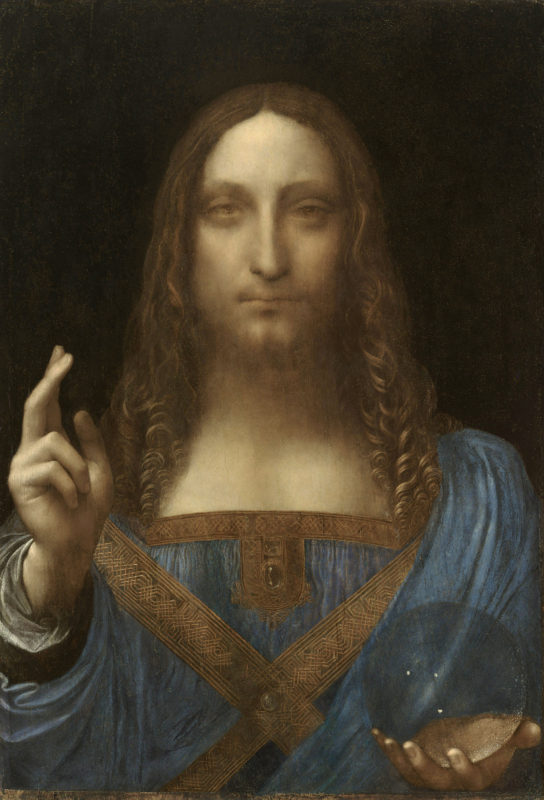Interesting Facts You Didn’t Know About Leonardo’s “Salvator Mundi”

While the figure of Leonardo da Vinci is the subject of ongoing debates and legends, each of his creations is also a legend on its own. One of the prominent examples of preserved artworks by this Renaissance genius is Leonardo’s “Salvator Mundi” – a painting depicting Jesus Christ. This masterpiece is unanimously recognized as one of the most expensive canvases in the world. Yet, the painting has many myths, legends, and lesser-known interesting facts surrounding it. Let’s take a closer look at the painting’s history and find some intriguing facts about it.
Alchemical Symbols in Leonardo’s “Salvator Mundi”
Though the painting’s visual theme is seemingly straightforward, depicting the figure of Jesus Christ, many professionals agree on the presence of alchemical symbols in it. One of them is the crystal orb that served as a symbol of the philosopher’s stone in da Vinci’s time. Besides, many see the intricate interplay of light and shadow in the canvas as a symbol of spiritual transformation, revealing da Vinci’s unique message associated with the Savior’s image. These observations shed light on the esoteric traditions of the Renaissance, which are often omitted in the mainstream analysis of “Salvator Mundi” from the classical viewpoint of painting style and technique.
Provenance Disputes That Fueled the Painting’s Mystique
The best-known story about “Salvator Mundi” is its record-breaking sale for $450 million in 2017, which transferred ownership of the da Vinci masterpiece to the Saudi Royal family. However, the lesser-known aspect of the painting’s history is the ambiguous history of its prior ownership and its mysterious rediscovery in a damaged state.
The painting vanished in the 18th century, with its only mention in the collection of the Marquess of Buckingham. After that, nothing was known about the work until its discovery in 2005 in New Orleans, heavily overpainted and damaged. Only the restoration procedure by Dianne Modestini helped the world rediscover Leonardo’s masterpiece, thus marking a new page for this unique artwork in contemporary art history.
Optical Illusions in the Painting
One more interesting observation that many appreciators of Leonardo’s “Salvator Mundi” often miss is the skilled use of optical illusions by the artist. If one delves deeply into the technical aspects of this painting’s creation, subtle distortions of the orb and the ambiguous gaze of Jesus Christ stand out as da Vinci’s unique methods for creating an illusion of movement and depth. These observations align with Leonardo da Vinci’s well-known fascination with optics and psychology, which he explored in his renowned artworks.

